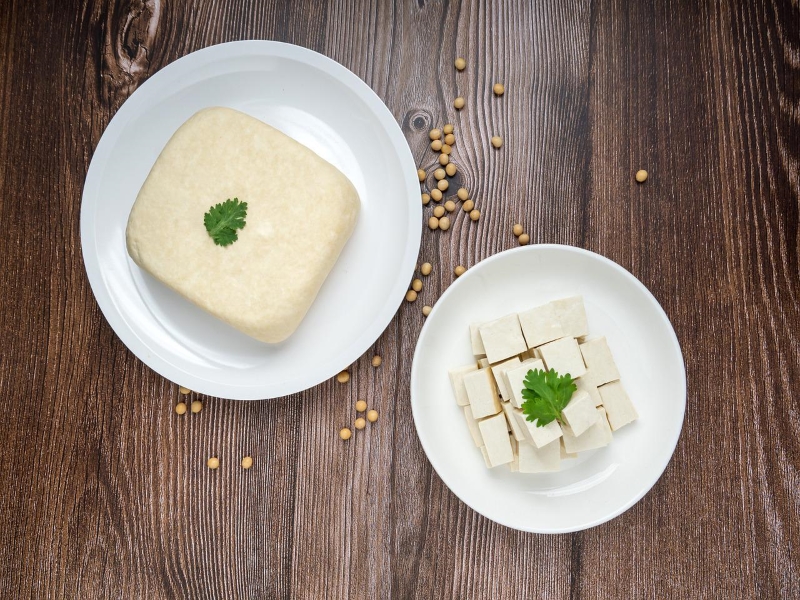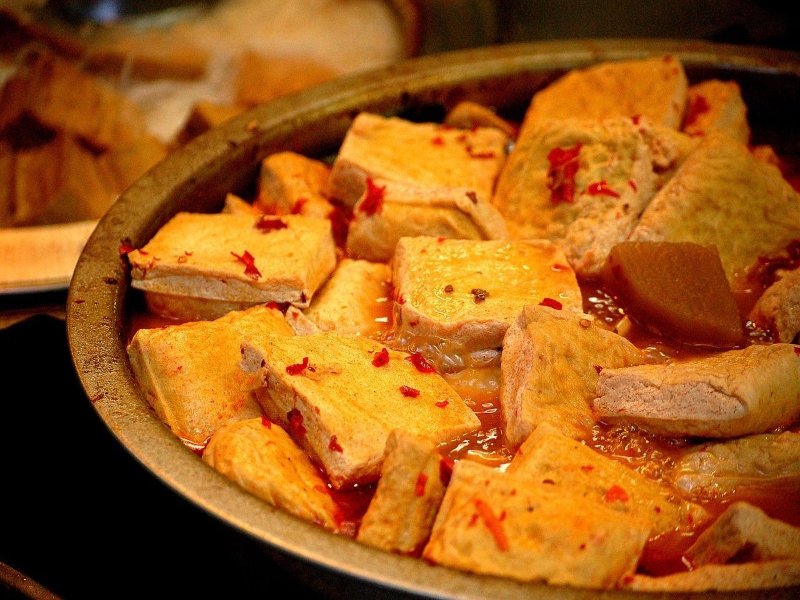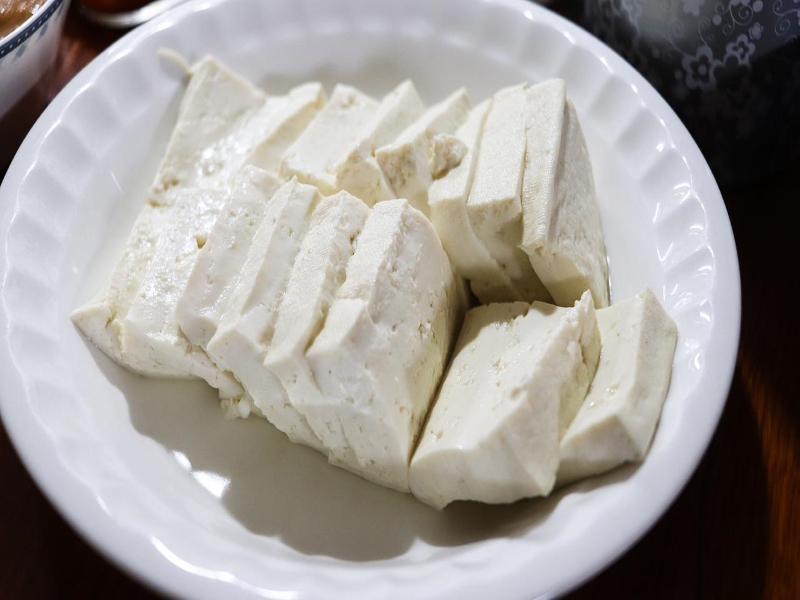Are you a vegan or vegetarian seeking for a meat substitute to supplement your protein intake? If you are, try tofu. Tofu is a good source of protein, and rich in important amino acids that your body needs.
This article discusses tofu, its history, and other facts about tofu. If you’re interested in knowing more about this delectable dish, keep reading.
History of Tofu

What Is Tofu?
Tofu, popularly known as bean curd, is a food made by coagulating soy milk and pressing the resulting tofu into solid white blocks of various softness. Tofu comes in a various textures. It can be soft tofu, silken tofu, firm tofu, extra firm tofu, or super firm tofu. It has a mild flavor that works well in both savory and sweet meals. It is commonly seasoned or marinated to fit the meal and its ingredients, and it absorbs flavors effectively because to its spongy nature.

Origin Of Tofu
Tofu originated in China and has been consumed there for more than 2,000 years, dating back to the Han era. It is also a typical ingredient in East and Southeast Asian cuisines, such as in Japan, Indonesia, Thailand, Korea, Singapore, and Vietnam.
Tofu making was first noted around 2000 years ago during the Chinese Han era. According to Chinese tradition, Prince Liu An (179–122 BC) of Anhui province created it. During the Nara period (710–794), tofu making technique were brought to Japan. Tofu is thought to have arrived in Vietnam between the 10th and 11th centuries, according to some historians. It rapidly spread throughout Southeast Asia. This is likely to have associated with the rise of Buddhism, as it is an important source of protein in East Asian Buddhism’s vegetarian diet.
China
When visiting the graves of deceased relatives in China, tofu is customarily used as a food offering. The spirits of the deceased are said to have lost their chins and jaws for so long that only tofu is soft enough for them to consume. Tofu was generally exclusively marketed during the winter in China before refrigeration became available, because tofu did not spoil as easily in cold temperatures. Tofu spoils if left out for more than a day during the summertime.
Japan
Zen Buddhist monks brought tofu to Japan during the Nara period (late 8th century), originally named it “Chinese curd.” Following the Japanese invasions of Korea around 1592–1598, a Korean doctor and prisoner of war introduced a solid variety of tofu to Tosa Province, today’s Kochi Prefecture. Tofu was first used as a vegetarian substitute for meat and fish by Buddhist monks in East Asia, particularly those who practiced Zen Buddhism.
Tofu was first recorded in a Japanese text in 1183, when it was served as an offering at the Kasuga Shrine in Nara. Tofu Hyakuchin, published in 1782 during the Edo era, has 100 cooking tofu recipes. In Japan, deep fried tofu is known as atsuage or namaage.
Southeast Asia
Tofu was brought to Southeast Asia by Chinese immigrants from Fujian province, as illustrated by the fact that many countries in the region refer to tofu using the Min Nan Chinese pronunciations for soft and firm tofu, or “tu-h” and “tu-goan,” respectively. Tofu is widely available and utilized in many local recipes in Indonesia, the Philippines, Malaysia, Myanmar, Singapore, Thailand, Cambodia, and Vietnam.
Tofu Flavor
The taste of tofu is often bland, which is the taste that shoppers in North America prefer. In East Asia, a more beany flavor is liked. The beany or bland flavor is created during the grinding and heating process, and the flavor can be modified by using either a “hot grind” or a “cool grind.” By inactivating the lipoxygenase enzyme in the soy protein, which is known to cause off tastes, the hot grind process decreases the beany flavor. By removing these off qualities, the tofu becomes bland.

Varieties Of Tofu
Unpressed Fresh Tofu
Gelled soy-milk with curd that has not been sliced and pressed of its liquid makes unpressed fresh tofu. Various forms of unpressed tofu are created depending on whether the soymilk is gelled with bittern (magnesium chloride) solution or a gypsum (calcium sulphate) suspension. There are various types of unpressed fresh tofu curds.
Extra Soft Tofu
Soy milk is fermented by combining it with seawater or saline water prepared with sea salt. The tofu curds stay loose and supple.
Soft Tofu
Silken tofu is another name for this type of tofu. This tofu is gypsum-gelled, undrained, and unpressed, with a high moisture content. To make silken tofu, coagulate soy milk without cutting the curd. Silken tofu comes in various of qualities, including soft and firm, but it’s all more delicate than regular firm tofu (pressed tofu) and has unique culinary purposes. Silken tofu can be used as a dairy and egg substitute, especially in smoothies and sweet dishes.
Douhua is identical to silken but is served a few hours after it is produced. It’s generally served as a hot dessert. Salty pickles or hot sauce are sometimes added. This is a form of soft tofu that has a lot of moisture. It is usually consumed with a spoon because it is challenging to pick up with chopsticks. Douhua is a popular breakfast meal in China, with flavorings such as finely chopped spring onions, dried shrimp, soy sauce, or chilli sauce.
Pressed Fresh Tofu
Two forms of tofu are created depending on how much water is drained from the cut and pressed curds, these are firm and extra firm fresh tofu. To keep its moisture content and freshness, fresh tofu is frequently sold entirely submerged in water. This also helps to prevent bacterial growth.
Firm Tofu
Fresh tofu in this form has a high moisture level. When pressed, it has the hardness of fresh meat and bounces back quickly. The inside of the tofu has a texture comparable to that of a firm custard. The pattern of the muslin used to drain this type of tofu is retained on the skin, and the outside is somewhat more resilient to damage than the inside. It is easily picked up with chopsticks.
Extra Firm Tofu
The extra firm type tofu known as Dòug?n or su ji has had a considerable part of the liquid pressed out. Dòug?n has the least moisture of all the fresh tofu varieties, the firmness of completely cooked meat, and has a rubbery texture. This tofu crumbles quickly when thinly sliced. The pattern of the muslin used to drain and press this type of tofu may be seen on skin of the tofu .
Processed Tofu
There are a lot of types of processed tofu. Below are some of the varieties.
Fermented Tofu
Also known as pickled tofu or preserved tofu. It’s made up of dried tofu cubes that have been air-dried under hay and slowly fermented with the help of aerial bacteria. The tofu is subsequently steeped in a mixture of whole rice, bean paste, and soybeans, or in salt water, vinegar, Chinese rice wine, or minced chilies.
Stinky Tofu
Stinky Tofu is a type of soft tofu that has been fermented in a brine of vegetables and fish. Tofu blocks have a strong cheese odor that can occasionally resemble spoiled food. Despite its pungent odor, enthusiasts enjoy the flavor and texture of stinky tofu, which they describe as delicious.
Frozen Tofu
Thousand-layer tofu, a variety of frozen tofu, has a a yellowish hue in the freezing process. The tofu originated in China, and the dish is usually made at home with soft tofu.
Another type of frozen tofu is Kori tofu. In Japanese markets, it’s available in freeze-dried blocks or cubes. It’s generally prepared with dashi, sake, mirin, and soy sauce. Vegan kombu dashi, derived from seaweed, is used in shjin ryri. It has a spongy texture and a somewhat sweet or savory flavor when made as directed.
By-products
Tofu Skins
Also known as beancurd skin, is a soybean-based culinary product. A film or skin formed on the liquid surface during the boiling of soy milk in an open shallow pan. The films are gathered and dried into tofu skin, which is a yellowish sheet. Tofu skin is not technically a tofu because it is not made with a coagulant, although, it has a texture and taste that is comparable to some tofu products.
Soy Pulp
Also known as Okara. This is a tofu by-product made up of the fiber, protein, and starch that is left over after making soy milk from ground soaked soybeans. Most tofu-producing regions utilize it as animal feed, although it also has additional uses in Japanese and Korean cuisines.

